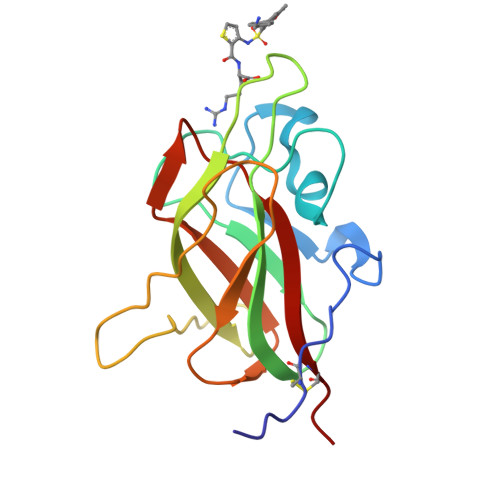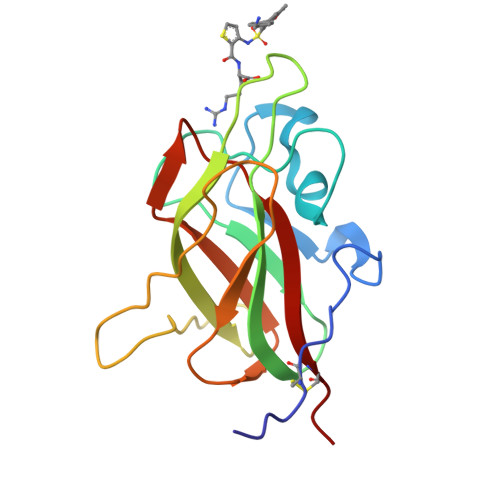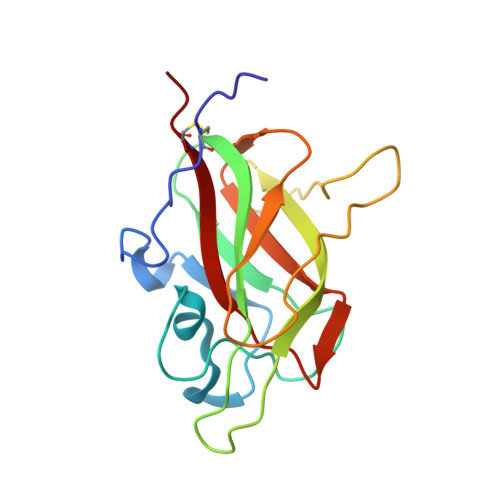Small Molecule Neuropilin-1 Antagonists Combine Antiangiogenic and Antitumor Activity with Immune Modulation through Reduction of Transforming Growth Factor Beta (TGF beta ) Production in Regulatory T-Cells.
Powell, J., Mota, F., Steadman, D., Soudy, C., Miyauchi, J.T., Crosby, S., Jarvis, A., Reisinger, T., Winfield, N., Evans, G., Finniear, A., Yelland, T., Chou, Y.T., Chan, A.W.E., O'Leary, A., Cheng, L., Liu, D., Fotinou, C., Milagre, C., Martin, J.F., Jia, H., Frankel, P., Djordjevic, S., Tsirka, S.E., Zachary, I.C., Selwood, D.L.(2018) J Med Chem 61: 4135-4154
- PubMed: 29648813
- DOI: https://doi.org/10.1021/acs.jmedchem.8b00210
- Primary Citation of Related Structures:
6FMC, 6FMF - PubMed Abstract:
We report the design, synthesis, and biological evaluation of some potent small-molecule neuropilin-1 (NRP1) antagonists. NRP1 is implicated in the immune response to tumors, particularly in Treg cell fragility, required for PD1 checkpoint blockade. The design of these compounds was based on a previously identified compound EG00229. The design of these molecules was informed and supported by X-ray crystal structures. Compound 1 (EG01377) was identified as having properties suitable for further investigation. Compound 1 was then tested in several in vitro assays and was shown to have antiangiogenic, antimigratory, and antitumor effects. Remarkably, 1 was shown to be selective for NRP1 over the closely related protein NRP2. In purified Nrp1 + , FoxP3 + , and CD25 + populations of Tregs from mice, 1 was able to block a glioma-conditioned medium-induced increase in TGFβ production. This comprehensive characterization of a small-molecule NRP1 antagonist provides the basis for future in vivo studies.
Organizational Affiliation:
NCE Discovery (Domainex Ltd) , Chesterford Research Park, Little Chesterford , Saffron Walden , Essex CB10 1XL , U.K.

















